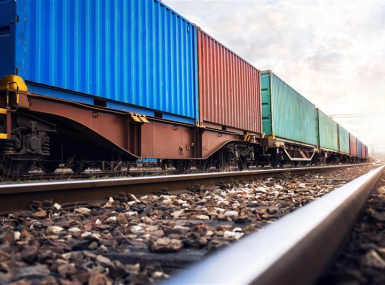Workshop: Keeping Counties Moving: Understanding the Role of Freight Transportation as an Economic Engine
Lack of deep-water ports puts U.S. at competitive disadvantage
John Vickerman, president of port design firm Vickerman Associates, described the global freight environment and the trends that have driven it in this workshop on Feb. 22.
Transoceanic freight stands out because the vast majority of consumer goods are shipped.
“Cargo will flow down river to the lowest cost, best service levels,” he said, noting that a one-day difference in delivery time was enough to make a shipper rethink things.
Shipping times will change with improvements to the Panama and Suez canals and the westward migration of manufacturing and production hubs toward southeast Asia from China. Still, six of the 10 busiest ports in the world remain on the Chinese mainland, with three others elsewhere in Asia.
Capacity is also an issue, though, and as freight ships get larger, they need deeper ports, and the lack of deep water ports in North America is contributing to a competitive disadvantage
“We have 386 public port authorities in North America, but ocean carriers do not consider us a best option,” Vickerman said.
What shippers want in ports is two-day transit by land to Chicago, and three-day transit to New York and New Jersey.
Steve Cernak, director of Port Everglades in Broward County, Fla., which handles domestic and international cargo and can connect to 70 percent of the U.S. population within two days, he said.
“Our industry requires consistent reinvestment,” he said. “We have $1.6 billion capital that we’ll be reinvesting over 20 years, but we have to use public private partnerships, we have to diversify our funding.”
Commissioner Brittany Pittman described how Murray County, Ga. used an inland port to revive a stagnant rural economy.
“We had rail, a manufacturing workforce and an excellent U.S. highway system to help,” she said. “All were underutilized resources.”
The port will load shipping trailers carried by truck onto trails that will make a nearly-400-mile trip to Georgia’s port north of Savannah.
More Legislative Conference coverage
- Legislative Conference packed with insights, innovations and influence
- Steering committees explore new legislative policy
- Speakers assess trends in political climate
- Counties accept challenge to combat rural poverty
- Governors’ Roundtable discussion tackles persistent rural poverty
- County leaders take criminal justice reform plans to Capitol Hill
- Legislative Conference Workshop: Counties on the Frontlines: The Escalating Substance Abuse Epidemic
- New group forms for LGBT leaders, allies
Attachments
Related News

Counties and Railroads: Shared Priorities for the Next Surface Transportation Bill
County leaders from across the country have a vital opportunity to ensure their infrastructure priorities are front and center.

House reintroduces bipartisan legislation to level playing field for rural communities
House reintroduced the Rural Partnership and Prosperity Act, bipartisan legislation intended to advance economic development in rural counties and overcome barriers to obtaining federal funding and resources.

Podcast: Eastern Tennessee counties invest in tourism during shutdown
Sevier County, Tenn. refused to let the government shutdown devastate its fall tourism draw—Great Smoky Mountains National Park. County Mayor Larry Waters describes the lengths he and his neighbors went to keep the park open. And NACo Chief Government Affairs Officer Mark Ritacco offers an outlook on what counties can take away from the shutdown and into the future.
